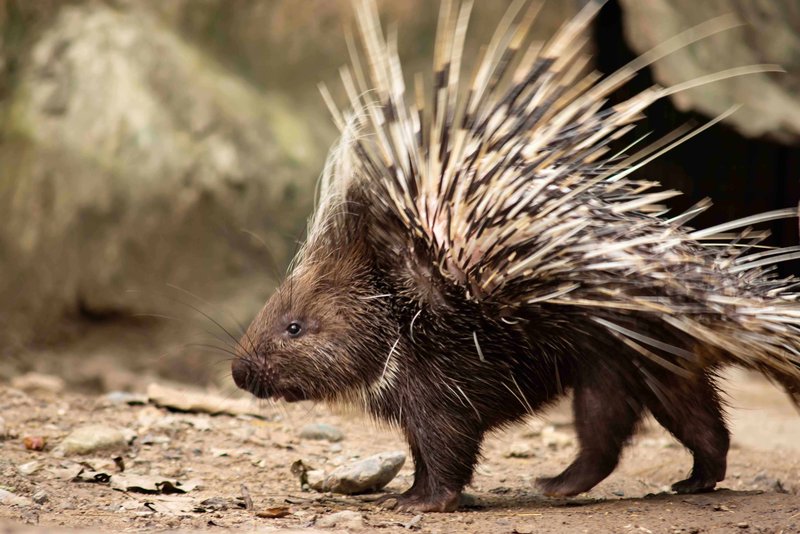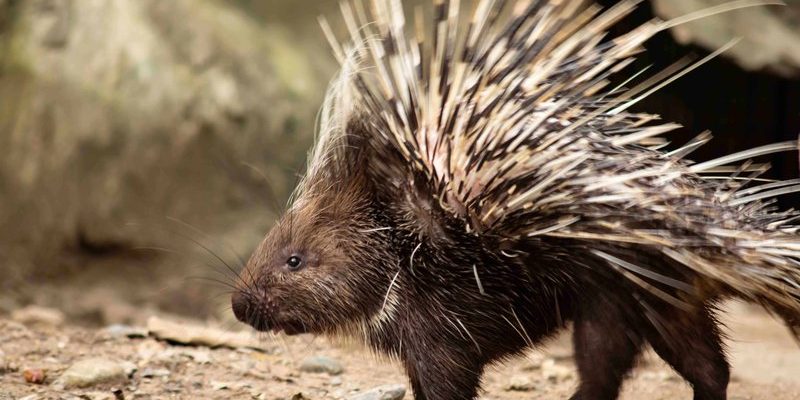
Just as a sturdy tree stands tall against the wind, the porcupine’s quills represent a defense mechanism that resonates with deeper meanings in many cultures. It embodies the idea of safeguarding oneself and is often tied to themes of caution, cleverness, and individuality. Let’s explore how this quirky animal is woven into stories and beliefs across different cultures, revealing the layers of meaning behind it.
The Porcupine in Native American Folklore
In many Native American cultures, the porcupine carries a significant symbolic weight. One of the most well-known stories features the porcupine as a protector. In these tales, the porcupine is often depicted as a clever character who uses its quills to ward off predators, teaching listeners about the importance of self-defense and cleverness.
For instance, in some tribes, the porcupine is said to have been gifted its quills by the Great Spirit as a means of protection against threats. This gift symbolizes more than just defense; it represents the idea of being true to oneself. The porcupine’s ability to stand strong while being vulnerable reflects a balance that many strive for in life. So, when you hear stories of a porcupine cleverly outsmarting a bear or fox, it’s not just about survival—it’s a lesson on the strength found in individuality.
Porcupines in African Lore
In various African cultures, the porcupine appears in fables and teachings, often embodying wisdom and resilience. For example, among the Zulu people, the porcupine is often seen as a symbol of survival against adversity. Folklore often tells of how the porcupine outsmarts hunters and predators by using its unique abilities. These stories focus on the importance of intelligence over brute strength, teaching lessons about ingenuity.
Moreover, the porcupine’s role in these tales often relates back to community and cooperation. In some instances, the porcupine is portrayed as a creature that, despite its solitary nature, teaches others about the value of working together. This duality of independence and interdependence reflects a rich cultural understanding of life’s complexities. So, the next time you think of a porcupine, remember it’s not just a spiky animal; it’s a symbol of deeper societal values.
Porcupines in Asian Myths
Asian cultures also have their share of porcupine representations, often filled with rich symbolism. In Chinese mythology, for instance, the porcupine is seen as a creature that embodies patience and steadfastness. Its unique ability to defend itself with quills serves as a metaphor for enduring life’s challenges. In tales, the porcupine teaches the value of remaining grounded and not rushing into decisions.
Moreover, in some regions, the porcupine is associated with prosperity and protection against evil spirits. Its quills are often thought to hold magical properties, bringing good fortune to those who respect the creature. This portrayal highlights how cultures have historically linked animals with human experiences and attributes, making the porcupine a symbol of hope and resilience.
Porcupines in Popular Culture
Fast forward to modern times, and you’ll find that the porcupine has slipped into popular culture, often appearing in literature and movies. Take, for example, characters like *Porky the Porcupine* from cartoons, which generally present a friendly and approachable persona. These representations help anthropomorphize the porcupine, making it less intimidating and more relatable.
This trend shows how perceptions of animals evolve. While traditional folklore might focus on survival and protection, contemporary portrayals often emphasize friendship, humor, and adventure. This shift reflects broader societal changes—especially how modern narratives often prefer to depict animals as characters who teach lessons about tolerance and acceptance.
Porcupines as Symbols of Individuality
Across various cultures, one of the most consistent themes surrounding the porcupine is its representation of individuality. With its unique quills, the porcupine stands out distinctly in nature, much as we all do in our lives. This characteristic has made it a symbol of embracing one’s uniqueness and standing firm in one’s identity.
In many stories, the porcupine’s ability to defend itself without resorting to aggression highlights the idea that strength doesn’t always equate to fighting. Instead, it calls for self-acceptance and the courage to be different. For many, the porcupine serves as a reminder that it’s okay to be oneself, even if that means being a bit different from the crowd.
The Porcupine’s Lessons for Today
As we look at how the porcupine is represented in culture and folklore, it becomes clear that this creature offers valuable life lessons. From the importance of self-protection to the embrace of individuality, the porcupine’s stories resonate in today’s world.
These tales encourage us to find strength in our uniqueness and remind us of the cleverness needed to navigate life’s challenges. Whether it’s about standing up for oneself or embracing one’s quirks, the porcupine stands as a symbol of resilience in a world that often challenges our identity.
Closing Thoughts on Porcupines and Their Symbolism
Ultimately, the porcupine is more than just a spiky critter roaming the woods; it’s a powerful symbol in various cultures and stories. Representing resilience, individuality, and cleverness, this creature has found its way into the hearts and minds of many. Its lessons are timeless and universal, reminding us of the importance of being true to ourselves while also knowing how to protect that identity. So, the next time you think of a porcupine, remember it’s not just an animal—it’s a teacher of life’s profound lessons.

